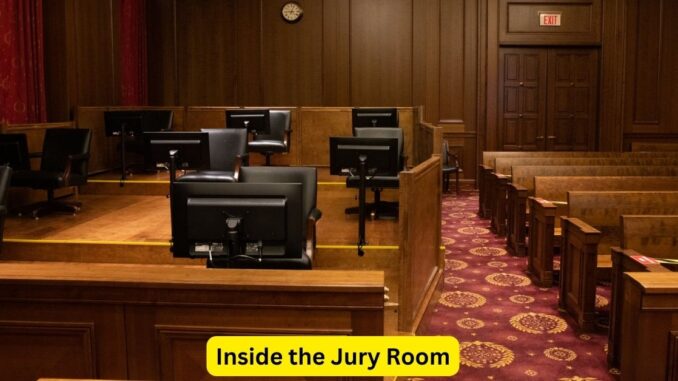
The jury room, often shrouded in mystery, is where the fate of many lives and the outcome of significant legal battles are decided. Inside these walls, ordinary citizens take on the extraordinary responsibility of delivering justice. This article delves into the dynamics of the jury room, shedding light on the experiences and stories that unfold during deliberations.
The Selection: From Citizen to Juror
The journey into the jury room begins with jury selection, a process known as voir dire. Prospective jurors are summoned to court and questioned by attorneys and the judge. This stage aims to ensure an impartial jury, free from biases or preconceived notions that could affect the trial’s outcome. Those selected represent a cross-section of the community, bringing diverse perspectives into the deliberation process.
The Trial: Observing Justice
Once selected, jurors take an oath to faithfully execute their duties. Throughout the trial, they attentively listen to testimonies, examine evidence, and observe the courtroom dynamics. This role demands diligence, as jurors must piece together the narrative presented by both the prosecution and defense. They are tasked with distinguishing facts from opinions, assessing the credibility of witnesses, and understanding complex legal instructions.
The Deliberation: Behind Closed Doors
Deliberation is the heart of the jury’s duty, occurring behind closed doors to ensure confidentiality and frank discussion. Here, jurors transform from passive observers to active participants in the justice system. The foreperson, elected by the jurors, facilitates the discussion, ensuring every voice is heard.
Inside the jury room, diverse backgrounds and viewpoints can lead to intense debates. Jurors must navigate differing opinions, biases, and interpretations of the evidence. This process is crucial, as it aims to reach a unanimous or majority decision, depending on the legal requirements of the jurisdiction.
Stories of Resolution: Compromise and Consensus
Each trial brings unique challenges and stories of resolution. In some cases, jurors quickly reach a consensus, finding the evidence clear-cut. For instance, in straightforward cases with substantial evidence, jurors often align their views without much contention.
However, more complex cases can lead to prolonged deliberations. Jurors must grapple with ambiguous evidence or conflicting testimonies. Stories from these deliberations often highlight the power of persuasion and compromise. Jurors share their insights, question their assumptions, and sometimes change their initial positions based on compelling arguments from their peers. This collaborative effort underscores the importance of collective reasoning in the pursuit of justice.
The Verdict: Delivering Justice
The moment of delivering the verdict is the culmination of the jury’s efforts. Jurors return to the courtroom, and the foreperson announces their decision. This moment carries immense weight, impacting the lives of the defendants, victims, and broader society. For jurors, it is a moment of solemn responsibility and, often, relief.
Reflections: The Weight of Responsibility
Serving on a jury leaves a lasting impression on many individuals. Jurors often reflect on the gravity of their role and the complexities of the legal system. Some express a newfound appreciation for the judicial process, while others grapple with the emotional toll of their decisions. Regardless of the outcome, jury service provides a profound insight into the workings of justice and the collective effort required to uphold it.
Conclusion
Inside the jury room, tales of trial deliberations reveal the intricacies of the justice system and the critical role that ordinary citizens play in it. Through diverse perspectives, rigorous debate, and a shared commitment to fairness, jurors navigate the challenging path to deliver justice. Their stories, often untold, are a testament to the power of collective human judgment in upholding the rule of law.

Leave a Reply